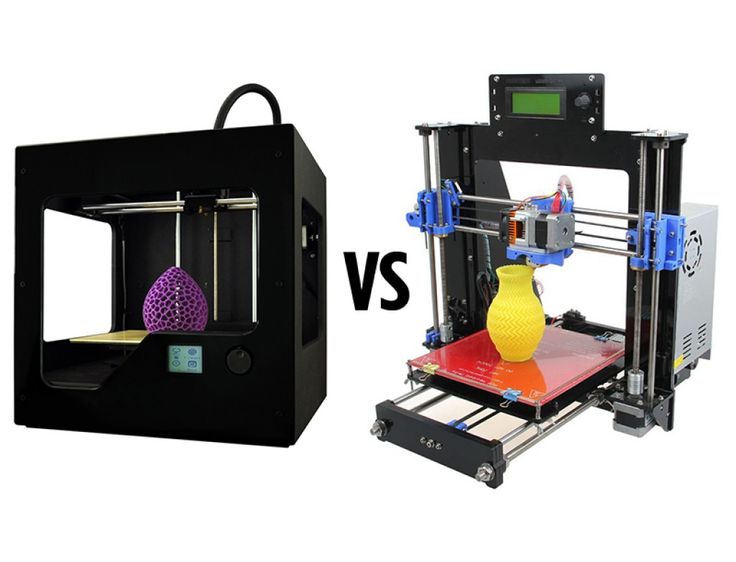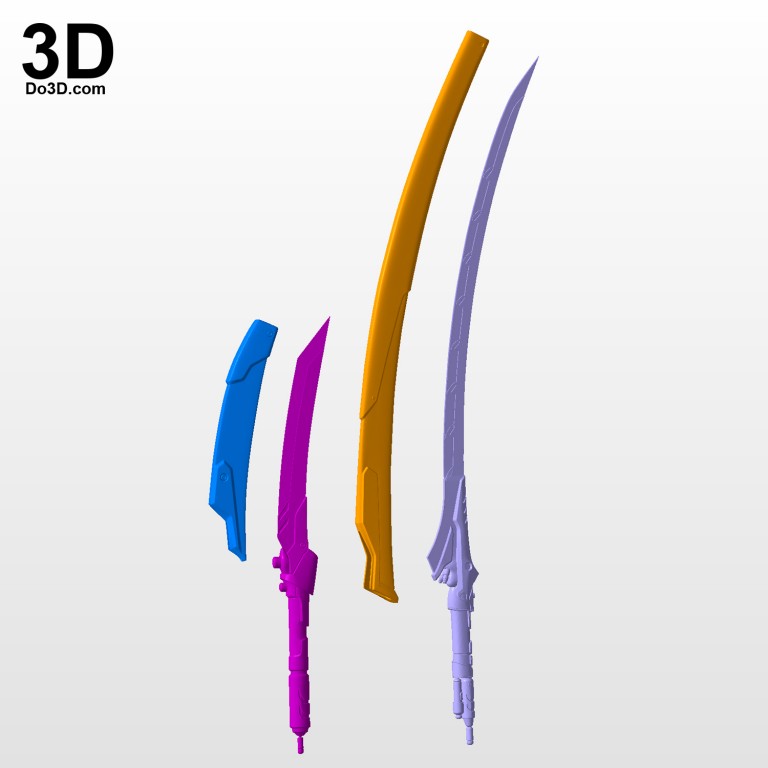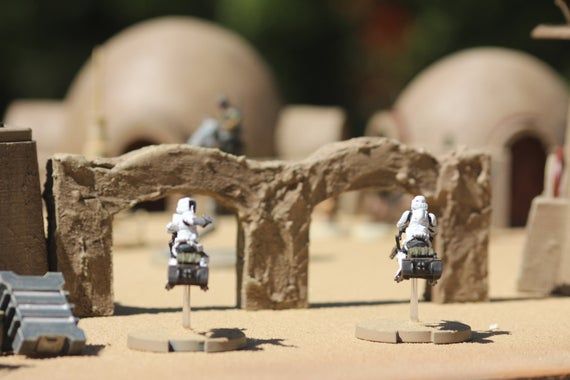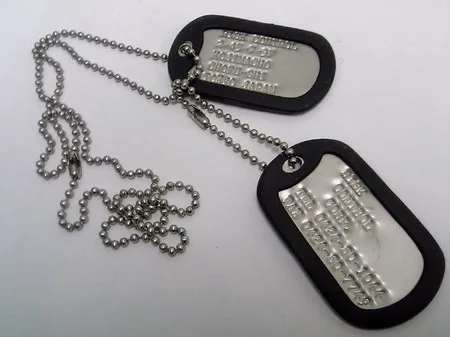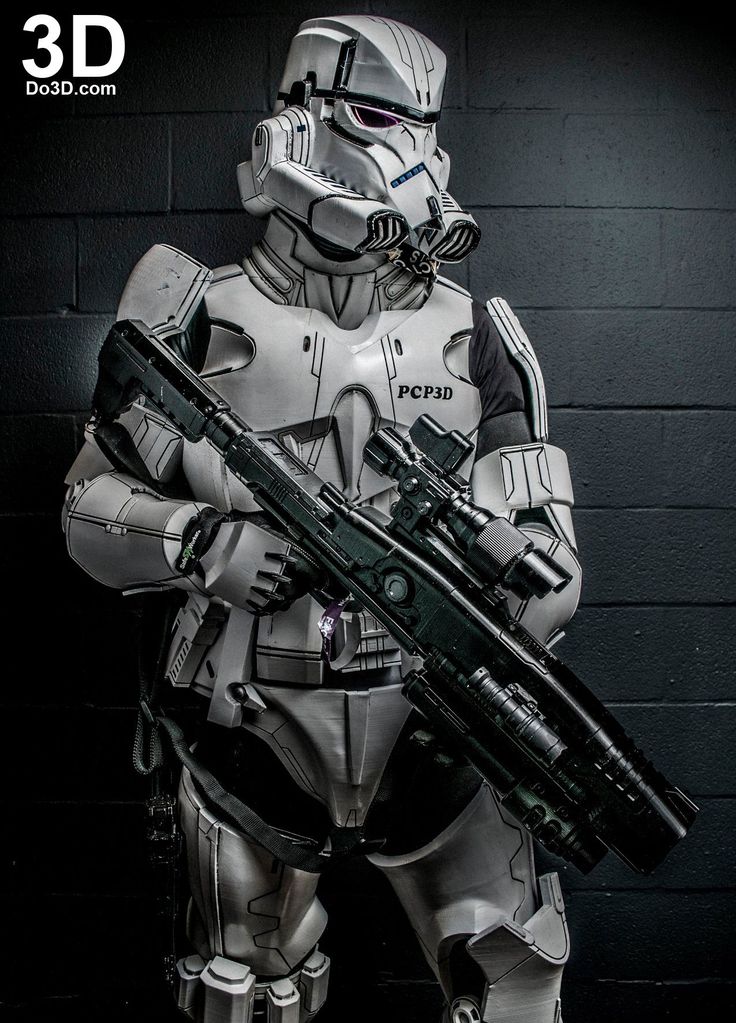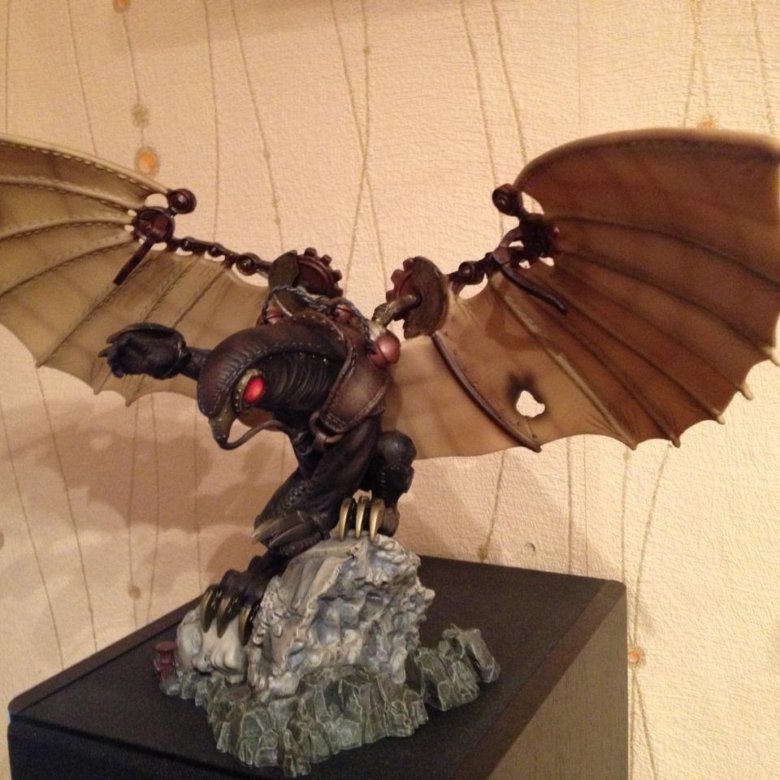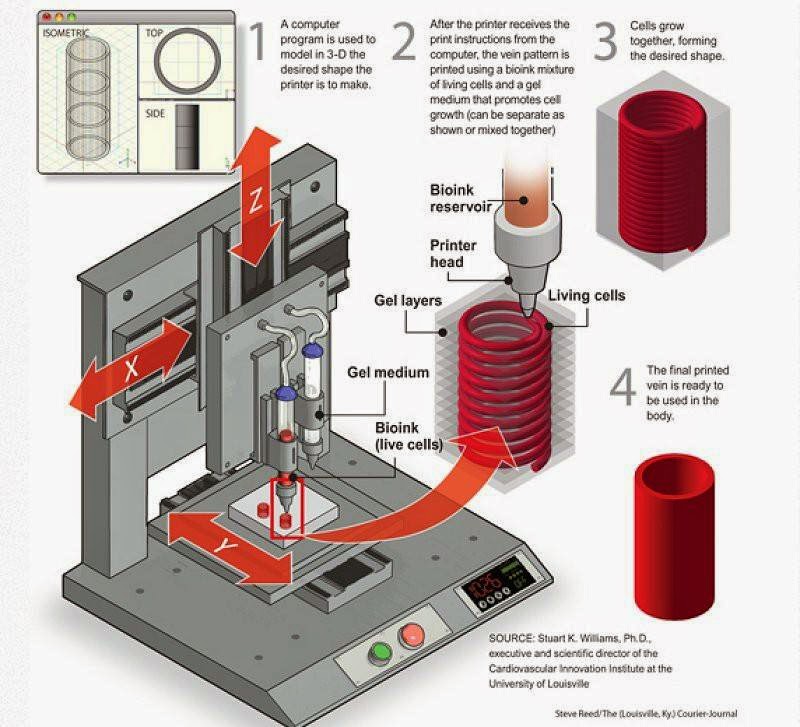Metallic resin 3d printer
How to Paint Your 3D Resin Print: Silver
Just a few simple paint layers will bring out the finer details of your high-quality 3D resin print. Metallic paints will even make your plastic figure look like it’s made of a more expensive material!
Gather Your Materials
- Paintbrushes: You’ll need at least 2 sizes, including a fine-detailed brush and larger brush. A set like this will have you covered.
- Paints: I like to use Army Painter paints. The colors are bright and bold and the consistency of the paint spreads easily without covering up the fine details of the figure. This kit plus a bottle of dark tone will cover all the colors I’ll be using in this tutorial.
- Primer: I use black primer spray paint to quickly and easily cover all the tiny nooks and crannies of the print.
- Magnifying Headset with Light: You need to see what you’re doing!
- Wet Palette: Helps keep your paints from drying out too fast. The secure snap-on cover can let you re-use your palette days later.
- Water Glass: Paper cups work fine.
- Holder Stand: Helps you twist and turn the figure to see it from every angle, without getting paint on your hands.
- Matte Varnish: Protects your painted figures from fading in the sun or chipping if you bump them.
Coat 1: Primer
Before you start painting, examine your figure carefully. Sand or clip any rough spots and use use Perfect Plastic Putty to fill in any cracks or divots left behind from support removal.
When you have the figure the way you want it, take it outside (or somewhere well ventilated) and give it a coat of spray-on primer. Be sure to spray the figure from all angles, including from below (you can lay the figure on its side) so that even the armpits, undersides of weapons, and between the legs are covered. It will take 2-3 coats to ensure you fill in every nook and cranny.
Werewolf coated in Black PrimerCoat 2: Base Coat
Once the primer is dry, bring the figure to your work bench, put on your magnifying headset, and get ready to paint! Using one of your bigger paint brushes, coat the entire figure in your base coat. I use Army Painter’s Gun Metal as the base paint here. After the paint has dried, but before you go on, take a moment to look the figure over carefully. Touch up any spots that you missed on the first go around.
I use Army Painter’s Gun Metal as the base paint here. After the paint has dried, but before you go on, take a moment to look the figure over carefully. Touch up any spots that you missed on the first go around.
Coat 3: Shadow Coat
The goal with this coat is to get the dark toner to settle into areas that would normally be shadowed in a life size figure. I’m using Army Painter’s Dark Tone on this werewolf.
Start by really slathering the paint on. Use your large brush and be generous with the paint—you want it to get into all the crevices! Working quickly, before the paint has a chance to dry, go back over the figure. This time your goal is to remove the excess paint: dab your brush on a dry paper towel after every few strokes, smoothing out the paint out as you go. Keep an eye out for reservoirs, or places where the pigment has collected in recesses. While these will tend to be in places where you’ll want the deepest shadows, you don’t want them to look unnaturally large. Dry your paintbrush on your paper towel and then touch the tip to a reservoir. The extra paint will be sucked up, leaving behind a nice shadow effect that brings out the texture in the figure without obscuring it.
Dry your paintbrush on your paper towel and then touch the tip to a reservoir. The extra paint will be sucked up, leaving behind a nice shadow effect that brings out the texture in the figure without obscuring it.
Reservoirs tend to collect around the edges of feet, in elbow creases, and at the bottoms of weapons. On this werewolf pay extra attention to the eyes, between the toes, the collarbone, and along the edges of the rocks.
Werewolf with a shadow layer in Dark Tone.Coat 4: Dry Brush Highlights
Now that you’ve deepened the low areas with your shadow coat, it’s time to bring out the raised areas with some highlights. Your final paint profile should look like this:
This sketch shows how the base coat, shadow coat, and highlight layers should interactFor the highlight layer, you’ll want to use a fairly large brush. You want just the raised areas of the figure to pick up paint, so keep the paint on your brush pretty light. Dip your brush into the paint, then make a few passes over your paper towel to remove excess paint. Gently move your paintbrush over the raised areas of the figure. Don’t push the bristles into the figure: remember, you don’t want this color getting into those recessed shadow areas. Moving your brush against the grain will help just the high areas pick up the paint.
Gently move your paintbrush over the raised areas of the figure. Don’t push the bristles into the figure: remember, you don’t want this color getting into those recessed shadow areas. Moving your brush against the grain will help just the high areas pick up the paint.
To give this werewolf a metallic sparkle, I use Army Painter’s Plate Mail Metal for the highlight layer. I also like to use this color to paint around the edge of the base.
Werewolf with highlights in Plate Mail MetalCoat 5: Detail Highlights
The final layer uses a light color to bring attention to the fine details and very edges of the figure. Use a small detail brush and take your time. Paint with the grain when painting details like fur or capes, tracing the very top of the raised areas with your brush. Keep the paint on the brush very light, dabbing excess paint off on the paper towel after your dip into the paint.
For this werewolf, I used Army Painter’s Shining Silver for the final detail highlights, focusing on his teeth and claws, the edges of his fur, and along the corners of the rocks. I also used it to bring attention to his muscles.
I also used it to bring attention to his muscles.
Coat 6: Matte Clear Coat
A matte clear coat protects your nice paint job and lets the metallic sparkle of your paints shine through.
Was this article helpful? Become a Patreon or buy me a coffee and I’ll write more!
Clicking on the Amazon Associate links in this article helps me pay the bills–and write more articles!
Leave a Comment on How to Paint Your 3D Resin Print: SilverHow To Paint
Tags 3d resin print, 3dprint, 3dresinprint, 3DsofSan, beginner, dnd, dungeons and dragons, dungeonsanddragons, how to paint, howto, howtopaint, miniature painting, miniaturepainting, miniatures, minifig, painting, silver, simons magic shoppe, simonsmagicshoppe, ttmini, ttrpg, tutorial, werewolf
How to Make 3D Prints Look Like Metal – Gold, Chrome, Nickel – 3D Printerly
Learning how to make 3D prints look like metal is a useful technique that people want to do, but aren’t sure how to best do it.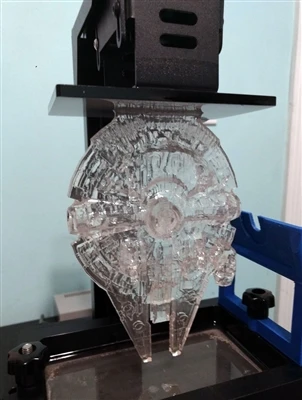 This article will take you through some techniques that you can use to make your 3D printed parts look like metal.
This article will take you through some techniques that you can use to make your 3D printed parts look like metal.
Keep on reading to learn more.
How to Make 3D Prints Look Like Metal
The following methods listed below show ways and procedures you can take to make 3D prints look like metal:
- Use metallic spray paint
- Nickel plate 3D prints
- Chrome plate 3D printed parts
- Gold plate 3D prints
Use of Metallic Spray Paint
One of the best ways to make your 3D prints look like metal is to use metallic spray paint. It’s a low-risk, relatively cheap method that is easy to do for giving your 3D prints a metallic effect.
Before doing this process, make sure you have the proper safety gear such as gloves and a mask so you don’t inhale dust or fumes.
Here’s how to use metallic spray paint on your 3D prints effectively:
- Sand the surfaces of your 3D print with 250-300 grit sandpaper
- Apply a sandable automotive filler primer to the model and let it dry
- Sand the model again
- Repeat the filler primer spray and sanding for a total of three coats of primer.

- Spray the model with a high-end metallic spray paint
- Spray a clear coat on the model to make the print pop, and to seal the paint
If you were to spray your model straight away with metallic spray paint, the paint might not stick to the model too well, and rougher surfaces are likely to show up afterwards, so you want to go through the steps for the best results.
You want to start with a sand paper grit of around 250-300 to make the surfaces smooth. Try not to sand with a grit too low because you can sand important details away. This is more to help the primer to stick to the model better.
After that apply a sandable automotive filler primer to the model to give the model a nice surface that paint can stick to easier. Also, if you have a white model that you want to spray a dark color, it might not look great when you apply the spray, due to the base color.
It’s better to coat it in a darker color like gray before you carry on with the process. I’d recommend using the Rust-Oleum Automotive Sandable Primer from Amazon.
I’d recommend using the Rust-Oleum Automotive Sandable Primer from Amazon.
Once the sandable primer has dried, you sand it down well with the same 250-300 grit sandpaper. It’s a good idea to apply two more coats of primer so the model is fully primed with no gaps, sanding between each coat.
After the last coat of primer, it doesn’t need a sanding because the surface should already be really smooth from the previous spraying and sanding.
Now, we can apply our metallic spray paint to the model. Many people recommend going with the Krylon Metallic Spray Paint as a high quality paint that makes models look great. They have many color options that you can choose from such as:
- 18K Gold
- Copper Brilliance
- Gold Foil
- Original Chrome
- Rose Gold
- Stirling Silver
When spraying paint, you want to shake up the can for a good few minutes to mix it up as best as possible. There’s a unique method you should use when spraying your models.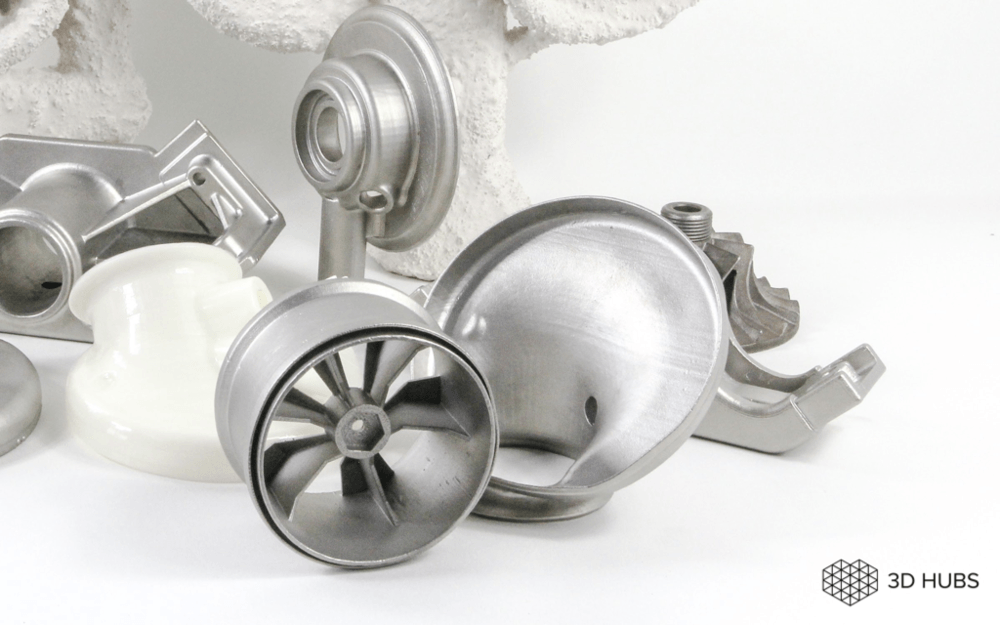
Experienced spray painter’s say to spray the object using a smooth arc-like motion across the model from a distance of about 50cm or 1 and a half feet. Try not to spray the model too heavily, it should be quite a light spray to give a smooth and even coat.
For the best results, you can do 4 coats of spray paint and let it dry between each layer for many hours, or even days in some cases.
You can even use an airbrush for better results with a chrome paint for example.
Some people like to apply a nice clear coat to the metallic spray paint to give it a glossy finish. It gives the model a more lasting metal look that seals the metallic spray paint and improves the durability.
The Krylon UV Resistant Clear Gloss Aerosol from Amazon should work pretty well for this.
The video below by Core Electronics is a great visual of making 3D prints look like metal.
Nickel Plate 3D Prints
Another way to make your 3D prints look like metal is to nickel plate them.
Check out this video below to see it in action. The user said he used electroplating with nickel anodes into an acidic solution. You also have another technique of spraying the conductive paint on instead.
90% successfully Nickel Plated a 3D printed part using electrical conductive filament from 3Dprinting
Here’s how to nickel plate your 3D prints:
- Coat the 3D print with conductive paint
- Copper plate the 3D print
- Brush the 3D print with nickel plating solution
Coat the 3D Print with Conductive Paint
Coating the 3D print with conductive paint makes it conductive, which is a requirement for successful nickel plating. Conductive paint can be painted or sprayed on the 3D print.
Most users have had good results with a mixture of acetone and graphite powder for conductive paint. The mixture is usually painted on the 3D print and left to dry.
A user found that a 70/30 percent ratio of acetone to graphite powder produces the best result, but noted that using the mixture causes a slow plating process. You can then airbrush this mixture onto the 3D print, after you have put a clear coat on it, while it’s still tacky.
You can then airbrush this mixture onto the 3D print, after you have put a clear coat on it, while it’s still tacky.
Another user mentioned using a product called India Ink and graphite powder also.
The 3D print can then be copper plated after the conductive paint has dried.
Since you can just use a good conductive paint, you can go with something like the Super Shield Nickel Conductive Paint from Amazon.
The reviews are mixed, with one recent user saying it worked great for electroplating their 3D prints, then others saying it didn’t work as well as other methods like the acetone and graphite powder mix.
A lot of people mentioned that there are many health warnings that should deter you from this method. It’s probably a better idea to go with acetone and graphite powder.
Copper Plate the 3D Print
It is important to copper plate the 3D print before brushing it with nickel plating solution to avoid the problem of non-plating nickel.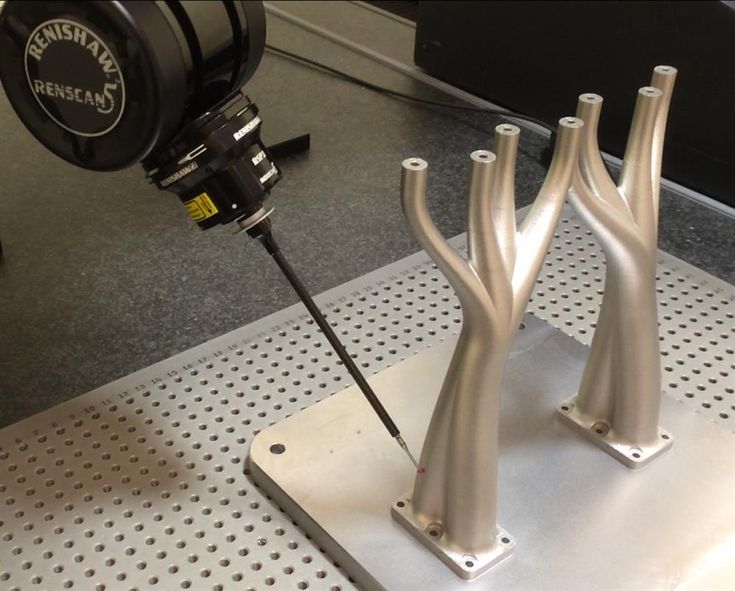
This is because nickel is plated easily on copper when compared to directly plating on the 3D print. It results in a durable and lasting nickel plated layer after nickel plating the 3D print.
The copper-plated 3D print should be polished and cleaned before brushing it with nickel plating solution.
Check out this example of a cool copper plated 3D print.
Simple Copper plating tutorial for 3D prints from 3Dprinting
I found this very useful video showing you how you can electroplate (nickel and copper plate) with many materials using a unique method that involves vinegar, table salt, some scrap metal, then some anodes and a power supply with terminals.
It’s a much better technique for electroplating more complex 3D prints.
Brush the 3D Print with Nickel Plating Solution
Brushing the copper-plated 3D print with nickel plating solution using a stainless steel brush would nickel plate the 3D print.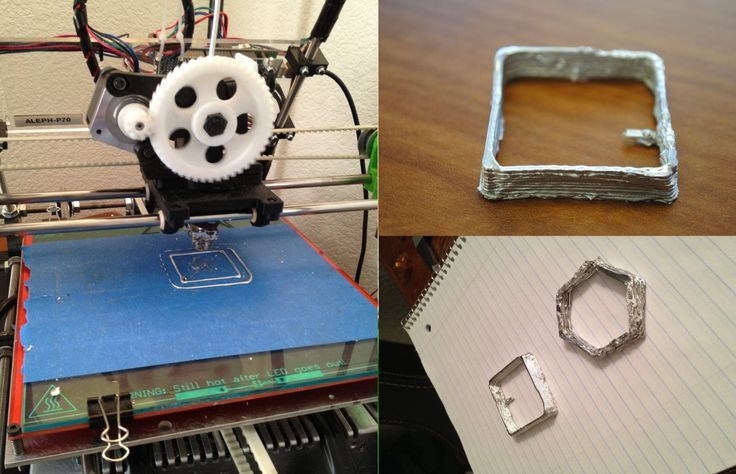
You can also polish the nickel plated layer with metal polish for a shiny nickel metal look.
Check out the video below to see how this electroplating or nickel plating is done using this Caswell Plug N’ Plate Nickel/Flash Copper Kit and a Mother’s Mag & Aluminum Polish from Amazon.
The copper kit doesn’t have the best reviews so I’m not sure how well it works, but it looks great in the video.
Chrome Plate 3D Printed Parts
Although 3D printed parts are usually chrome plated by professionals, the steps taken to chrome plate 3D printed parts are as follows:
Chrome plating 3D printed parts are usually done by professionals because of all the equipment it uses, and for safety reasons.
Here are the general steps followed to chrome plate 3D prints:
- Submerge the 3D printed parts in MEK
- Coat the 3D printed parts with conductive paint
- Copper plate the 3D printed parts
- Submerge the 3D printed parts in chrome plating solution
Submerge the 3D Printed Parts in MEK
To take grease and dirt off the 3D print, you can submerge the 3D print in a colorless corrosive solution named MEK (Methyl Ethyl Ketone).
Deformities and irregularities can occur on the 3D print during the copper plating process if the dirt and grease are not removed. Submerging the 3D printed parts in MEK prepares them for coating with conductive paint.
Coat the 3D Printed Parts with Conductive Paint
Most 3D prints are non-conductive unless they are printed with conductive filament. For successful chrome plating, the 3D printed parts must be made conductive by coating them in conductive paint.
Conductive paints are available in liquid and sprays that can be airbrushed, painted or sprayed on the 3D printed parts to make them conductive.
You should ensure that the 3D printed parts are thoroughly coated with the conductive paint to avoid the problem of non-plating copper in the next step of the chrome plating procedure below.
Copper Plate the 3D Printed Parts
For a durable chrome plate, it is best to first copper plate the 3D print after the conductive paint has dried before nickel plating the 3D print, and then you can finally submerge it in the chrome plating solution.
This is because copper has the best adhesion to 3D prints when metals are considered. You should also polish the copper-plated layer and degrease it in preparation for the nickel plating process.
Nickel Plate the 3D Printed Parts
Nickel plating of the 3D printed parts after copper plating ensures that chrome doesn’t fall off the 3D printed parts when submerged inside the chrome plating solution.
You should also clean and degrease this nickel plated layer before submerging the 3D printed parts in chrome plating solution to avoid irregularities in the chrome that will be plated on the 3D prints.
After taking all the steps described above, the 3D printed parts can be submerged in the chrome plating solution.
Submerge the 3D Printed Parts in Chrome Plating Solution
This is the final stage of the chrome plating process. The nickel-plated 3D print is submerged into a chrome plating solution for some minutes, or brushed until the 3D print is plated with chrome.
After following all the steps listed above, you should have a chrome-plated 3D print.
You should know that chrome plating involves the use of dangerous chemicals. As such, most users recommend sending the 3D printed parts to professionals to be chrome plated.
Gold Plate 3D Prints
Making 3D prints gold-plated follow a similar process as above, though they require an expensive 24K gold electrolyte.
To gold plate your 3D prints, follow the following instructions:
- Coat the 3D print with conductive paint
- Copper plate the 3D print
- Brush plate the 3D print with palladium plating solution
- Brush plate the 3D print with gold plating solution
My second 3D printed, metal electroplated Captain Phasma helmet.
This time I plated with pure gold. from 3Dprinting
Coat the 3D Print with Conductive Paint
Coating the 3D print with conductive paint is a necessary step in electroplating the 3D print. It makes the 3D print conductive, which is one of the criteria that must be fulfilled for the next step of the gold plating process to be successful, which is copper plating the 3D print.
Conductive paints are available in varieties such as copper conductive paint, silver conductive paint, and gold conductive paint, just to name a few. For this step, copper conductive paint will suffice.
You can paint, airbrush, or spray paint conductive paint on the 3D print. After the conductive paint has dried, you can then copper plate the 3D print.
Copper Plate the 3D Print
Copper is the easiest metal to plate on 3D prints. For this reason, most people prefer to copper plate the 3D print before plating with palladium and then gold.
This results in a durable gold-plated 3D print.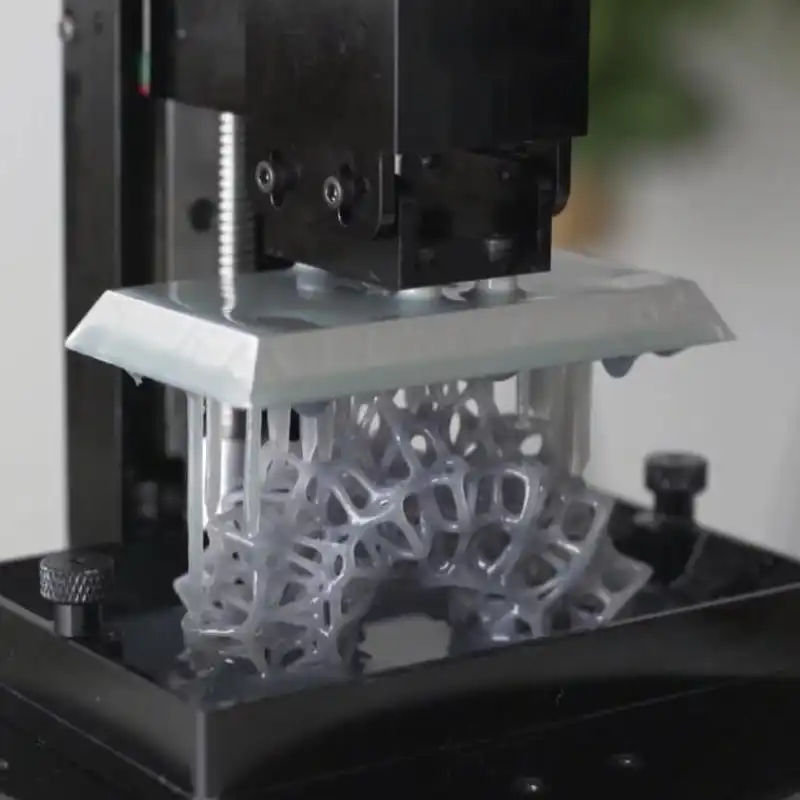 The 3D print can then be brush plated with palladium plating solution after copper plating.
The 3D print can then be brush plated with palladium plating solution after copper plating.
Brush Plate the 3D Print with Palladium Plating Solution
Plating the copper-plated 3D print with palladium ensures a durable and lasting gold plate. This is because gold has better adhesion to palladium than copper.
Most people coat the copper-plated 3D print with a thin layer of palladium because palladium plating solutions can be expensive. After this step, you can then brush plate the 3D print with gold plating solution.
Brush Plate the 3D Print with Gold Plating Solution
This is the final step of the gold plating process. The palladium-plated 3D print is brushed with gold plating solution until the 3D print is plated gold.
You should get a cyanide-free gold plating solution for the gold plating process, as cyanide can be harmful to your health if not properly handled.
The video below does a great job showing the steps to gold plate 3D prints successfully.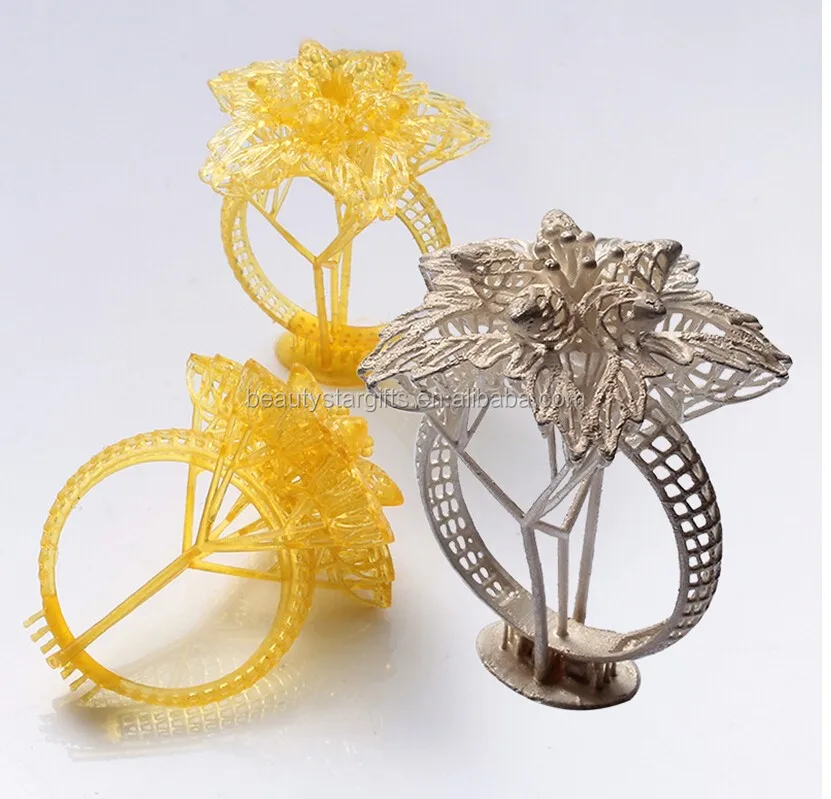
Metallic SLA Resin for 3D Prints
Here are the best ways to make resin 3D prints look metal:
- Mixing metal powder with resin before printing
- Painting the SLA resin 3D print with metallic paint
Mixing Metal Powder with Resin Before Printing
You could try using Gold & Silver Metallic Alcohol Ink from Amazon, then mix it with a white resin to create a metal look for your models. I haven’t tried this myself, but I have mixed resin pigments with UV resin and that worked well.
Some people said it worked well with epoxy resin, but that is a different product.
Another method that was mentioned was to mix a metal powder with the resin before 3D printing with it to create that metallic look in 3D prints. It seems to be a less reliable method though, so some people prefer to use a simple metallic spray paint instead.
One user did confirm that this Pearl Ex Pigment 6 Color Set worked well for 3D printing metallic looking resin models. You might have to increase your exposure times to compensate for the resin mixture.
Painting the SLA Resin 3D Print with Metallic Paint
Another way to make resin 3D prints look metallic is to paint the 3D print with metallic paint.
This is recommended by many users when a metallic look is desired on the SLA resin 3D print. Metallic paints are available in various colors and can be airbrushed, painted or sprayed on the 3D print.
You can see the recommendations in the painting section earlier in this article since they work in the same way as resin models.
Best Metallic Spray Paint for 3D Prints
One of the best metallic spray paints for 3D prints is the Krylon Metallic Spray Paint. They are available in various metal colors and can be sprayed directly onto plastic, perfect for 3D prints.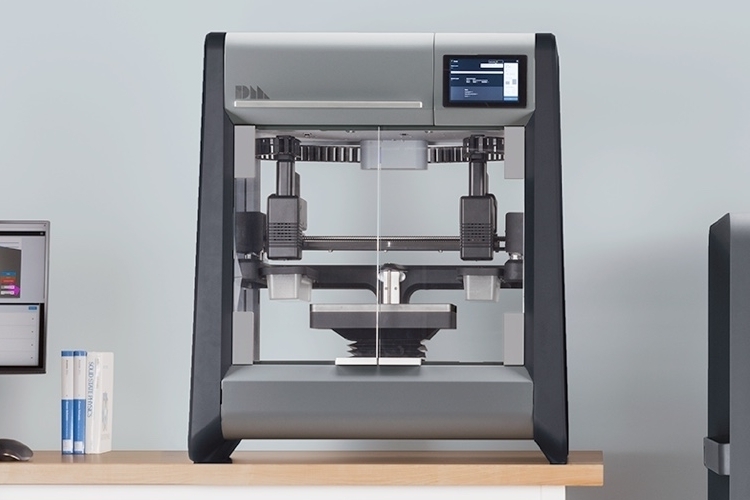 It’s better to prime the surface of your 3D prints with a good primer, then spray paint this product afterwards.
It’s better to prime the surface of your 3D prints with a good primer, then spray paint this product afterwards.
Many users have had good results using Krylon spray paint, like one person that got good results with PLA, PETG, and TPU. A great option is the Krylon Premium Metallic Original Chrome Spray Paint from Amazon, having many positive reviews.
Here’s a simple video from Krylon showing you how to spray your objects properly.
3D printer QIDI TECH S-Box
The new printer for photopolymer printing from the QIDI brand can be safely called the hero of the world of 3D printers! Even a cursory glance at the device is enough to understand that we have before us an impressive and reliable piece of equipment, but does the appearance of the printer correspond to its internal and functional features? Our detailed review of the QIDI TECH S-Box 3D printer will help you figure it out!
Content:
- Appearance
- Basic characteristics
- Equipment
- Advantages
- User support
- Disadvantages of
- Video review
- Print examples
- Total
Appearance
QIDI TECH S-Box meets us with a black plastic case with a red transparent print chamber cover.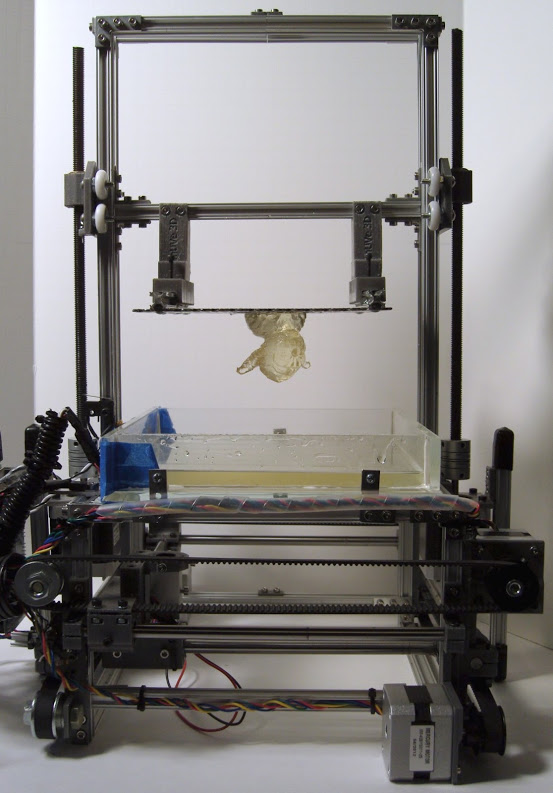 Strong plastic protects the device from external mechanical influences. Solid build and a solidly built design inspire confidence that the printer will last a long time.
Strong plastic protects the device from external mechanical influences. Solid build and a solidly built design inspire confidence that the printer will last a long time.
Basic characteristics of QIDI TECH S-Box
The main feature of the QIDI TECH S-box is an enlarged build area of 215x130x200 mm and a third-generation 2K matrix with a 10.1-inch display, which allow high-resolution printing. Moreover, in order to use the entire usable area of the printer, it implements a uniform illumination of the working area.
The printer contains aluminum metal parts, rails and resin tank. True, everything has its price, and not only in terms of money. The printer has impressive dimensions, but there is no need to be scared, the S-box is far from industrial scale, moreover, it works quite quietly.
Contents
In addition to the basic things like instructions, the kit also includes two calibration sheets, a spare film for the printer and instructions for replacing it. The kit also comes with half a kilogram of QIDI branded photopolymer resin, a screwdriver, a power cable, a plastic spatula to remove resin residue from the film, a flash card with recorded useful materials for the user (this flash card can also be used to write files for later printing) .
The kit also comes with half a kilogram of QIDI branded photopolymer resin, a screwdriver, a power cable, a plastic spatula to remove resin residue from the film, a flash card with recorded useful materials for the user (this flash card can also be used to write files for later printing) .
Further, a set of two filters used to reduce the smell of photopolymer resin, gloves and a mask for working with the printer during printing, a set of filters for straining the waste resin, for its subsequent use.
Advantages of QIDI Tech S-Box
The main advantage of the printer is that QIDI managed to maintain high print quality when using a 2K display. The quality of the matrix is of great importance, not all LCD displays are the same. The S-Box is equipped with a screen from the well-known Taiwanese company AUO, a leader in display research and production. This LED matrix is equipped with 96 separate points of UV radiation. Such a wide, powerful and evenly distributed system ensures high-quality and accurate resin curing during 3D printing.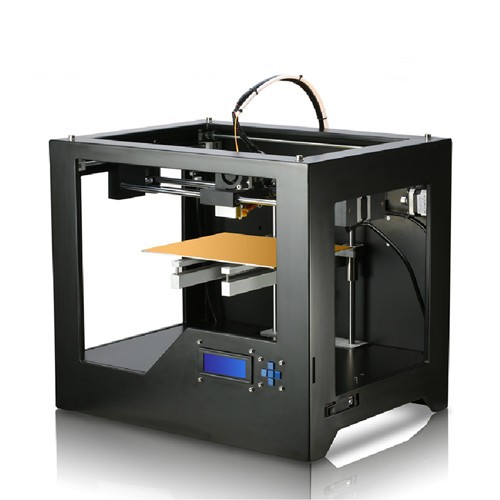
Z-axis motor with intelligent chip is also worth highlighting. It is the engine that allows high-precision printing of 1 micron. Add to all this the double rails and internal metal parts that we mentioned above, and we get a quiet, and most importantly stable print. So that even a beginner can figure it out and print his first masterpiece, the printer has a simple and understandable Chitubox slicer.
User support
Even when the device fully satisfies your technical needs, any user can not do without technical support. Whether it's a quick consultation or a complex problem that you couldn't handle on your own, QIDI is here to help. The customer service responds promptly and quickly resolves the issues that have arisen.
Disadvantages of QIDI Tech S-Box
The weight and dimensions of the QIDI Tech S-Box are its weak points. 25 kg and size 565x365x490 mm is a lot. But even in this minus you can see a plus, literally. The fact is that the screen and connection ports are placed on one side, unlike other printers, where all this is located under the print chamber. This arrangement of the screen allows you to better control the process of work and conveniently change settings.
The fact is that the screen and connection ports are placed on one side, unlike other printers, where all this is located under the print chamber. This arrangement of the screen allows you to better control the process of work and conveniently change settings.
Video review QIDI Tech S-Box
Printing examples QIDI Tech S-Box
The model was created on QIDI Tech S-Box using material from Harz Labs.
Summary
QIDI Tech S-Box is big and heavy, but quiet enough. The ventilation system with several carbon filters allows you to effectively clean the air from harmful impurities. The controls are simple, so the device is suitable for people with any experience using photopolymer 3D printers.
If you've been looking for an accurate LCD printer with a large printable area, look no further.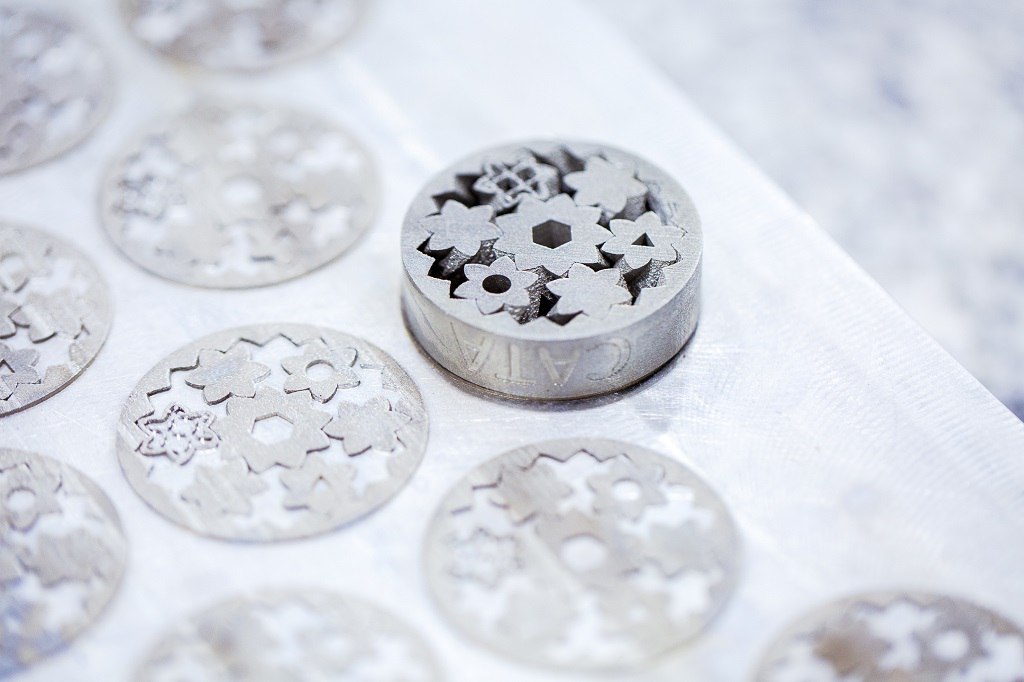
Source
Tags:
QIDI brand photopolymer 3d printer, QIDI TECH S-Box 9 3D printer0003
Attention!
We accept news, articles or press releases
with links and images. [email protected]
3D printing for "dummies" or "what is a 3D printer?"
- 1 3D printing term
- 2 3D printing methods
- 2.1 Extrusion printing
- 2.2 Melting, sintering or gluing
- 2.3 Stereolithography
- 2.4 Lamination
- 3 Fused Deposition Printing (FDM)
- 3.1 Consumables
- 3.2 Extruder
- 3.3 Working platform
- 3.4 Positioners
- 3.5 Control
- 3.6 Varieties of FDM printers
- 4 Laser stereolithography (SLA)
- 4.
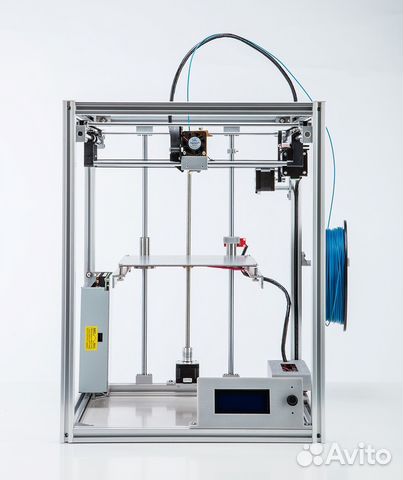 1 Lasers and projectors
1 Lasers and projectors - 4.2 Cuvette and resin
- 4.3 Varieties of Stereolithography Printers
The term 3D printing
The term 3D printing has several synonyms, one of which quite briefly and accurately characterizes the essence of the process - "additive manufacturing", that is, production by adding material. The term was not coined by chance, because this is the main difference between multiple 3D printing technologies and the usual methods of industrial production, which in turn received the name "subtractive technologies", that is, "subtractive". If during milling, grinding, cutting and other similar procedures, excess material is removed from the workpiece, then in the case of additive manufacturing, material is gradually added until a solid model is obtained.
Soon 3D printing will even be tested on the International Space Station
Strictly speaking, many traditional methods could be classified as "additive" in the broad sense of the word - for example, casting or riveting.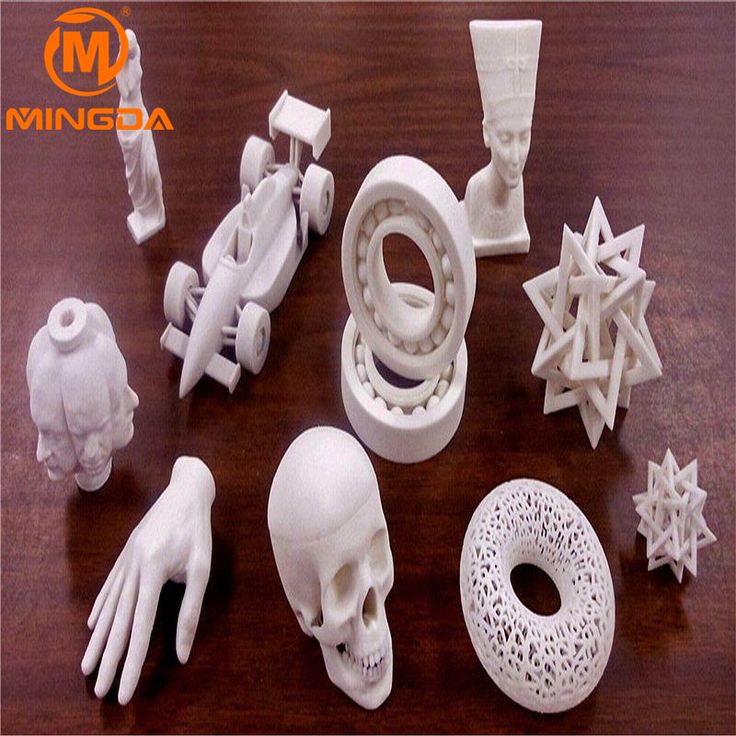 However, it should be borne in mind that in these cases, either the consumption of materials is required for the manufacture of specific tools used in the production of specific parts (as in the case of casting), or the whole process is reduced to joining ready-made parts (welding, riveting, etc.). In order for the technology to be classified as “3D printing”, the final product must be built from raw materials, not blanks, and the formation of objects must be arbitrary - that is, without the use of forms. The latter means that additive manufacturing requires a software component. Roughly speaking, additive manufacturing requires computer control so that the shape of final products can be determined by building digital models. It was this factor that delayed the widespread adoption of 3D printing until the moment when numerical control and 3D design became widely available and highly productive.
However, it should be borne in mind that in these cases, either the consumption of materials is required for the manufacture of specific tools used in the production of specific parts (as in the case of casting), or the whole process is reduced to joining ready-made parts (welding, riveting, etc.). In order for the technology to be classified as “3D printing”, the final product must be built from raw materials, not blanks, and the formation of objects must be arbitrary - that is, without the use of forms. The latter means that additive manufacturing requires a software component. Roughly speaking, additive manufacturing requires computer control so that the shape of final products can be determined by building digital models. It was this factor that delayed the widespread adoption of 3D printing until the moment when numerical control and 3D design became widely available and highly productive.
3D printing methods
3D printing technologies are numerous, and there are even more names for them due to patent restrictions. However, you can try to divide technologies into main areas:
However, you can try to divide technologies into main areas:
Extrusion printing
This includes methods such as deposition fusion (FDM) and multi-jet printing (MJM). This method is based on the extrusion (extrusion) of consumables with the sequential formation of the finished product. As a rule, consumables consist of thermoplastics or composite materials based on them.
Melting, sintering or bonding
This approach is based on bonding powdered material together. Formation is done in different ways. The simplest is gluing, as is the case with 3D inkjet printing (3DP). Such printers deposit thin layers of powder onto the build platform, which are then selectively bonded with a binder. Powders can be made up of virtually any material that can be ground to a powder—plastic, wood, metal.
This model of James Bond's Aston Martin was successfully printed on a Voxeljet SLS printer and blown up just as successfully during the filming of Skyfall instead of the expensive original
sintering (SLS and DMLS) and smelting (SLM), which allow you to create all-metal parts. As with 3D inkjet printing, these devices apply thin layers of powder, but the material is not glued together, but sintered or melted using a laser. Laser sintering (SLS) is used to work with both plastic and metal powders, although metal pellets usually have a more fusible shell, and after printing they are additionally sintered in special ovens. DMLS is a variant of SLS installations with more powerful lasers that allow sintering metal powders directly without additives. SLM printers provide not just sintering of particles, but their complete melting, which allows you to create monolithic models that do not suffer from the relative fragility caused by the porosity of the structure. As a rule, printers for working with metal powders are equipped with vacuum working chambers, or they replace air with inert gases. Such a complication of the design is caused by the need to work with metals and alloys subject to oxidation - for example, with titanium.
As with 3D inkjet printing, these devices apply thin layers of powder, but the material is not glued together, but sintered or melted using a laser. Laser sintering (SLS) is used to work with both plastic and metal powders, although metal pellets usually have a more fusible shell, and after printing they are additionally sintered in special ovens. DMLS is a variant of SLS installations with more powerful lasers that allow sintering metal powders directly without additives. SLM printers provide not just sintering of particles, but their complete melting, which allows you to create monolithic models that do not suffer from the relative fragility caused by the porosity of the structure. As a rule, printers for working with metal powders are equipped with vacuum working chambers, or they replace air with inert gases. Such a complication of the design is caused by the need to work with metals and alloys subject to oxidation - for example, with titanium.
Stereolithography
How an SLA printer works
Stereolithography printers use special liquid materials called "photopolymer resins".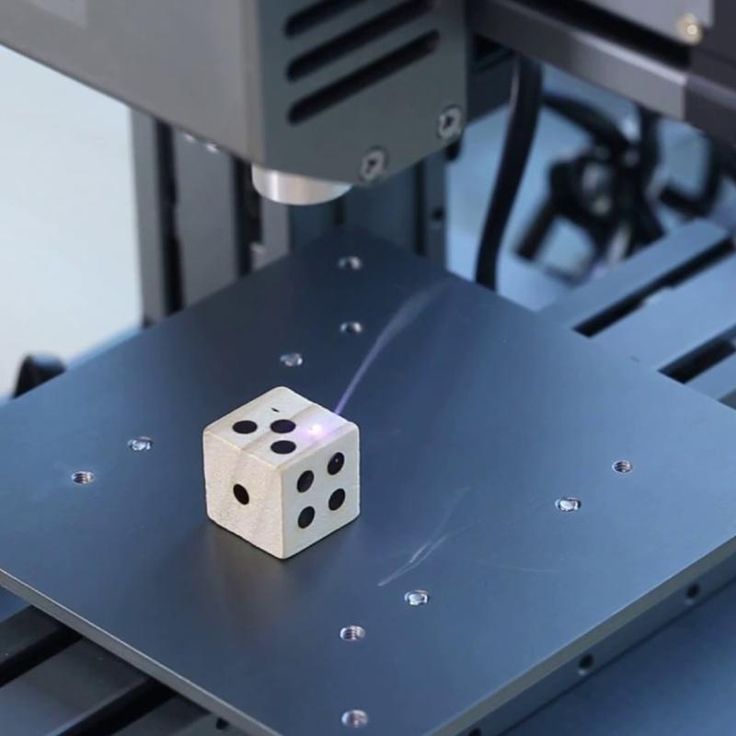 The term "photopolymerization" refers to the ability of a material to harden when exposed to light. As a rule, such materials react to ultraviolet irradiation.
The term "photopolymerization" refers to the ability of a material to harden when exposed to light. As a rule, such materials react to ultraviolet irradiation.
Resin is poured into a special container with a movable platform, which is installed in a position near the surface of the liquid. The layer of resin covering the platform corresponds to one layer of the digital model. Then a thin layer of resin is processed by a laser beam, hardening at the points of contact. At the end of illumination, the platform together with the finished layer is immersed to the thickness of the next layer, and illumination is performed again.
Laminating
Laminating (LOM) 3D printers
Some 3D printers build models using sheet materials - paper, foil, plastic film.
Layers of material are glued on top of each other and cut along the contours of the digital model using a laser or a blade.
These machines are well suited for prototyping and can use very cheap consumables, including regular office paper.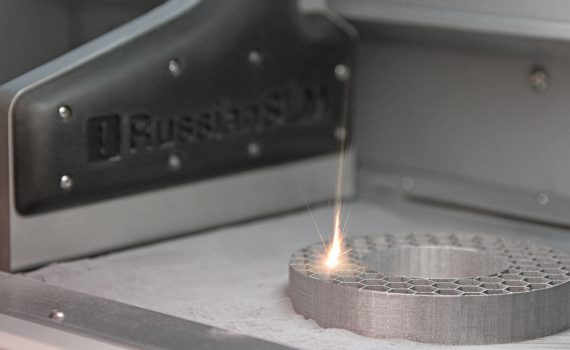 However, the complexity and noise of these printers, coupled with the limitations of the models they produce, limit their popularity.
However, the complexity and noise of these printers, coupled with the limitations of the models they produce, limit their popularity.
Fused deposition modeling (FDM) and laser stereolithography (SLA) have become the most popular 3D printing methods used in the home and office.
Let's take a closer look at these technologies.
Fused Deposition Printing (FDM)
FDM is perhaps the simplest and most affordable 3D construction method, which makes it very popular.
High demand for FDM printers is driving device and consumable prices down rapidly, along with technology advances towards ease of use and improved reliability.
Consumables
ABS filament spool and finished model
FDM printers are designed to print with thermoplastics, which are usually supplied as thin filaments wound on spools. The range of "clean" plastics is very wide. One of the most popular materials is polylactide or "PLA plastic".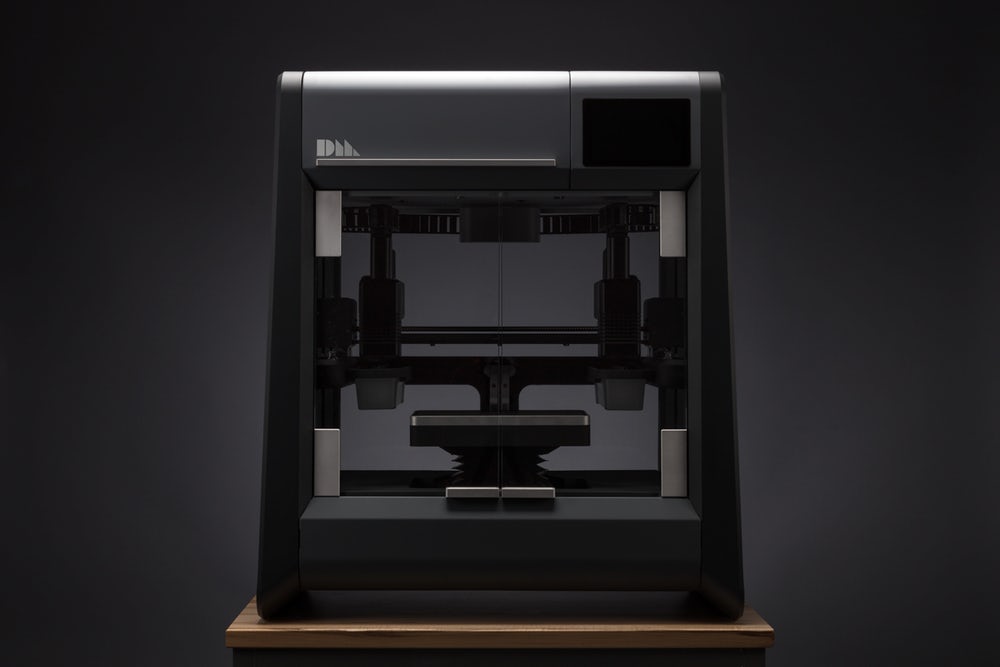 This material is made from corn or sugar cane, which makes it non-toxic and environmentally friendly, but makes it relatively short-lived. ABS plastic, on the other hand, is very durable and wear-resistant, although it is susceptible to direct sunlight and can release small amounts of harmful fumes when heated. Many plastic items that we use on a daily basis are made from this material: housings for household appliances, plumbing fixtures, plastic cards, toys, etc.
This material is made from corn or sugar cane, which makes it non-toxic and environmentally friendly, but makes it relatively short-lived. ABS plastic, on the other hand, is very durable and wear-resistant, although it is susceptible to direct sunlight and can release small amounts of harmful fumes when heated. Many plastic items that we use on a daily basis are made from this material: housings for household appliances, plumbing fixtures, plastic cards, toys, etc.
In addition to PLA and ABS, printing is possible with nylon, polycarbonate, polyethylene and many other thermoplastics that are widely used in modern industry. More exotic materials are also possible, such as polyvinyl alcohol, known as "PVA plastic". This material dissolves in water, which makes it very useful for printing complex geometric patterns. But more on that below.
Model made from Laywoo-D3. Changing the extrusion temperature allows you to achieve different shades and simulate annual rings
It is not necessary to print with homogeneous plastics.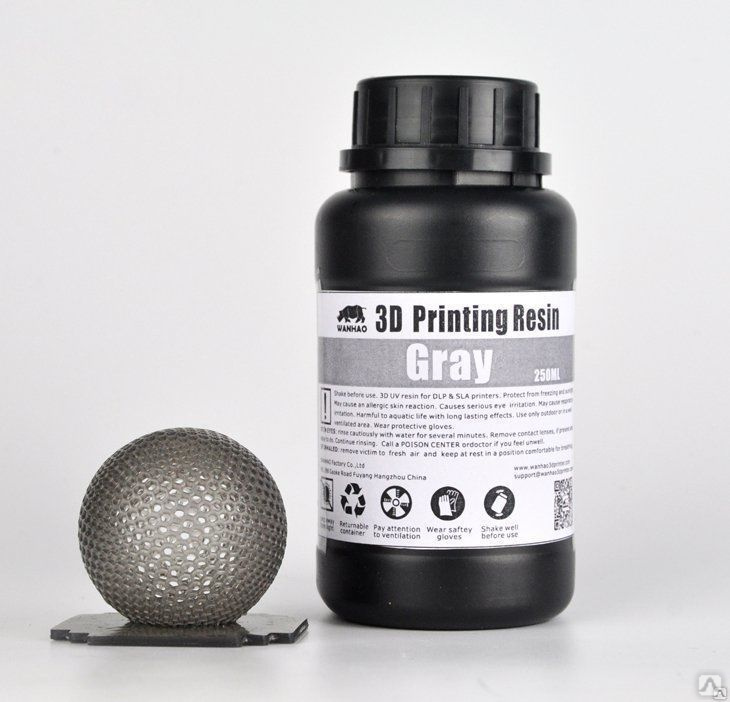 It is also possible to use composite materials imitating wood, metals, stone. Such materials use all the same thermoplastics, but with impurities of non-plastic materials.
It is also possible to use composite materials imitating wood, metals, stone. Such materials use all the same thermoplastics, but with impurities of non-plastic materials.
So, Laywoo-D3 consists partly of natural wood dust, which allows you to print "wooden" products, including furniture.
The material called BronzeFill is filled with real bronze, and models made from it can be ground and polished, achieving a high similarity to products made from pure bronze.
One has only to remember that thermoplastics serve as a binding element in composite materials - they determine the thresholds of strength, thermal stability and other physical and chemical properties of finished models.
Extruder
Extruder - FDM print head. Strictly speaking, this is not entirely true, because the head consists of several parts, of which only the feed mechanism is directly "extruder". However, by tradition, the term "extruder" is commonly used as a synonym for the entire print assembly.-kupit-v-soin-store.ru-2.png)
FDM extruder general design
The extruder is designed for melting and applying thermoplastic thread. The first component is the thread feed mechanism, which consists of rollers and gears driven by an electric motor. The mechanism feeds the thread into a special heated metal tube with a small diameter nozzle, called a "hot end" or simply a "nozzle". The same mechanism is used to remove the thread if a change of material is needed.
The hot end is used to heat and melt the thread fed by the puller. As a rule, nozzles are made from brass or aluminum, although more heat-resistant, but also more expensive materials can be used. For printing with the most popular plastics, a brass nozzle is quite enough. The “nozzle” itself is attached to the end of the tube with a threaded connection and can be replaced with a new one in case of wear or if a change in diameter is necessary. The nozzle diameter determines the thickness of the molten filament and, as a result, affects the print resolution.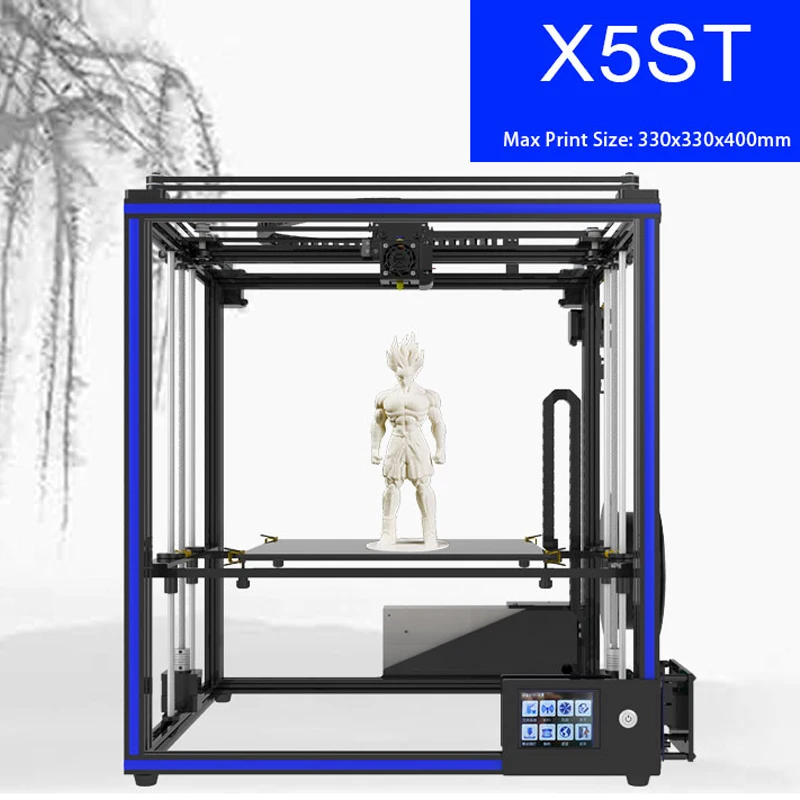 The heating of the hot end is controlled by a thermistor. Temperature control is very important, because when the material is overheated, pyrolysis can occur, that is, the decomposition of plastic, which contributes both to the loss of the properties of the material itself and to clogging of the nozzle.
The heating of the hot end is controlled by a thermistor. Temperature control is very important, because when the material is overheated, pyrolysis can occur, that is, the decomposition of plastic, which contributes both to the loss of the properties of the material itself and to clogging of the nozzle.
PrintBox3D One FDM Printer Extruder
To prevent the filament from melting too early, the top of the hot end is cooled by heatsinks and fans. This point is of great importance, since thermoplastics that pass the glass transition temperature significantly expand in volume and increase the friction of the material with the walls of the hot end. If the length of such a section is too long, the pulling mechanism may not have enough strength to push the thread.
The number of extruders may vary depending on the purpose of the 3D printer. The simplest options use a single print head. The dual extruder greatly expands the capabilities of the device, allowing you to print one model in two different colors, as well as using different materials.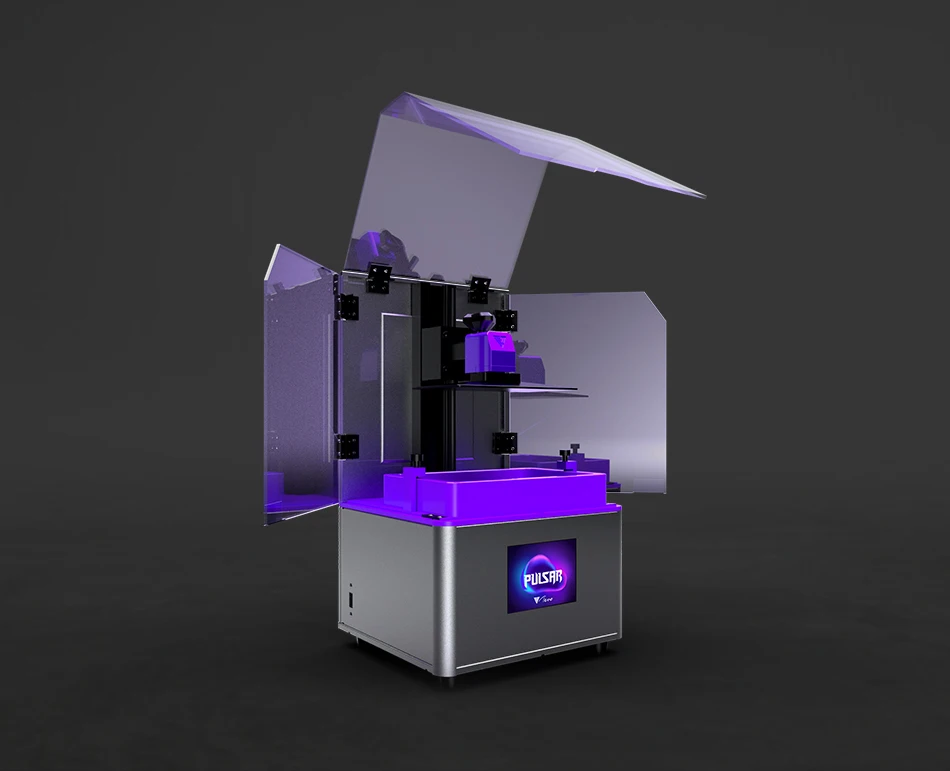 The last point is important when building complex models with overhanging structural elements: FDM printers cannot print “over the air”, since the applied layers require support. In the case of hinged elements, temporary support structures have to be printed, which are removed after printing is completed. The removal process is fraught with damage to the model itself and requires accuracy. In addition, if the model has a complex structure with internal cavities that are difficult to access, building conventional supports may not be practical due to the difficulty in removing excess material.
The last point is important when building complex models with overhanging structural elements: FDM printers cannot print “over the air”, since the applied layers require support. In the case of hinged elements, temporary support structures have to be printed, which are removed after printing is completed. The removal process is fraught with damage to the model itself and requires accuracy. In addition, if the model has a complex structure with internal cavities that are difficult to access, building conventional supports may not be practical due to the difficulty in removing excess material.
Finished model with PVA supports (white) before and after washing
In such cases, the very water-soluble polyvinyl alcohol (PVA) comes in handy. Using a dual extruder, you can build a model from waterproof thermoplastic using PVA to create supports.
After printing, PVA can simply be dissolved in water and a complex product of perfect quality can be obtained.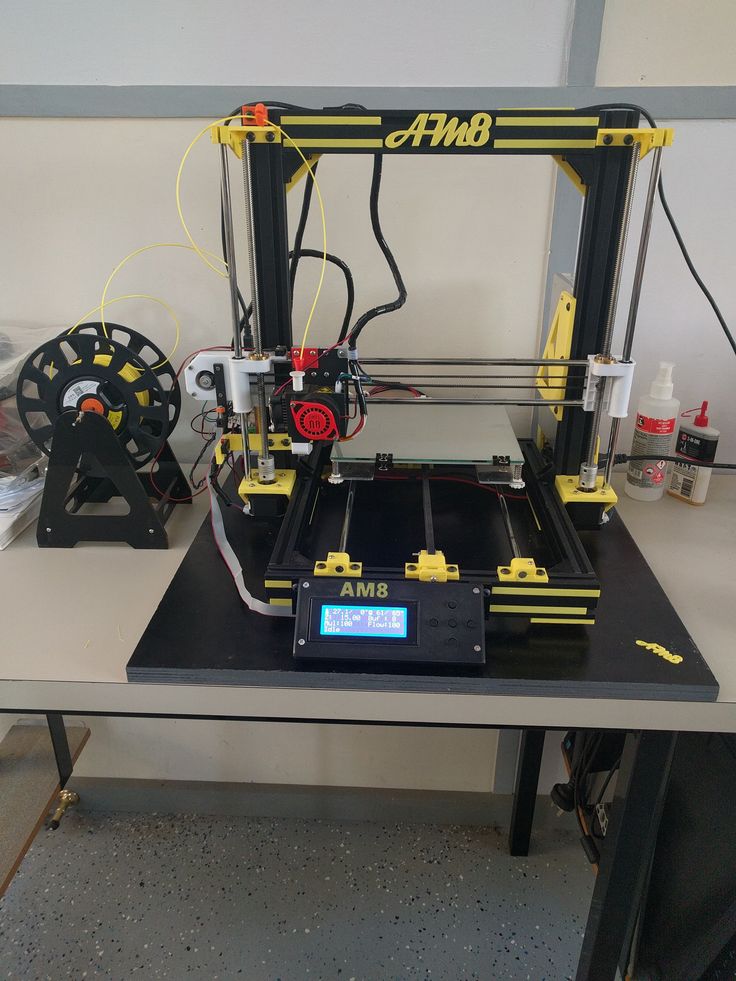
Some FDM printers can use three or even four extruders.
Work platform
Heated platform covered with removable glass work table
Models are built on a special platform, often equipped with heating elements. Preheating is required for a wide range of plastics, including the popular ABS, which are subject to a high degree of shrinkage when cooled. The rapid loss of volume by cold coats compared to freshly applied material can lead to model distortion or delamination. The heating of the platform makes it possible to significantly equalize the temperature gradient between the upper and lower layers.
Heating is not recommended for some materials. A typical example is PLA plastic, which requires a fairly long time to harden. Heating PLA can lead to deformation of the lower layers under the weight of the upper ones. When working with PLA, measures are usually taken not to heat up, but to cool the model. Such printers have characteristic open cases and additional fans blowing fresh layers of the model.
Such printers have characteristic open cases and additional fans blowing fresh layers of the model.
Calibration screw for work platform covered with blue masking tape
The platform needs to be calibrated before printing to ensure that the nozzle does not hit the applied layers and move too far causing air-to-air printing resulting in plastic vermicelli. The calibration process can be either manual or automatic. In manual mode, calibration is performed by positioning the nozzle at different points on the platform and adjusting the platform inclination using the support screws to achieve the optimal distance between the surface and the nozzle.
As a rule, platforms are equipped with an additional element - a removable table. This design simplifies the cleaning of the working surface and facilitates the removal of the finished model. Stages are made from various materials, including aluminum, acrylic, glass, etc. The choice of material for the manufacture of the stage depends on the presence of heating and consumables for which the printer is optimized.
For a better adhesion of the first layer of the model to the surface of the table, additional tools are often used, including polyimide film, glue and even hairspray! But the most popular tool is inexpensive, but effective masking tape. Some manufacturers make perforated tables that hold the model well but are difficult to clean. In general, the expediency of applying additional funds to the table depends on the consumable material and the material of the table itself.
Positioning mechanisms
Scheme of operation of positioning mechanisms
Of course, the print head must move relative to the working platform, and unlike conventional office printers, positioning must be carried out not in two, but in three planes, including height adjustment.
Positioning pattern may vary. The simplest and most common option involves mounting the print head on perpendicular guides driven by stepper motors and providing positioning along the X and Y axes.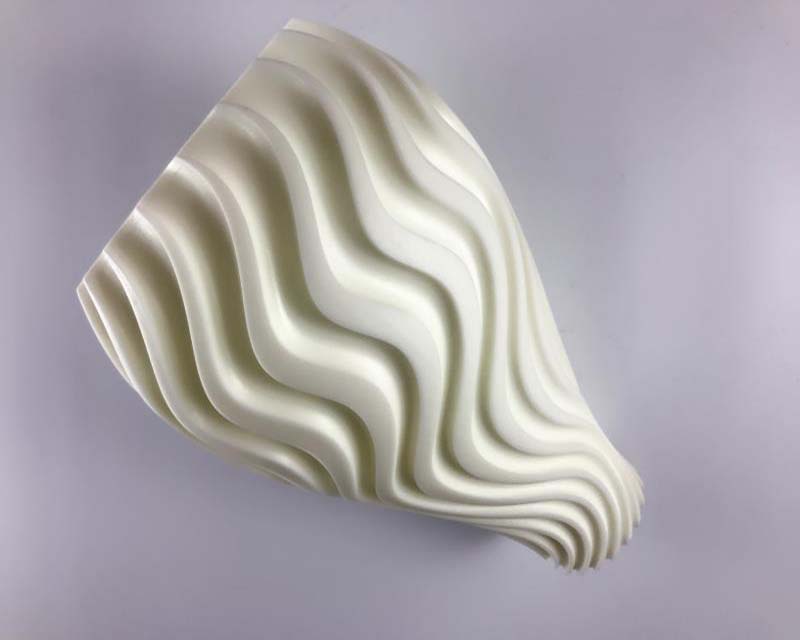
Vertical positioning is carried out by moving the working platform.
On the other hand, it is possible to move the extruder in one plane and the platforms in two.
SeemeCNC ORION Delta Printer
One option that is gaining popularity is the delta coordinate system.
Such devices are called "delta robots" in the industry.
In delta printers, the print head is suspended on three manipulators, each of which moves along a vertical rail.
The synchronous symmetrical movement of the manipulators allows you to change the height of the extruder above the platform, and the asymmetric movement causes the head to move in the horizontal plane.
A variant of this system is the reverse delta design, where the extruder is fixed to the ceiling of the working chamber, and the platform moves on three support arms.
Delta printers have a cylindrical build area, and their design makes it easy to increase the height of the working area with minimal design changes by lengthening the rails.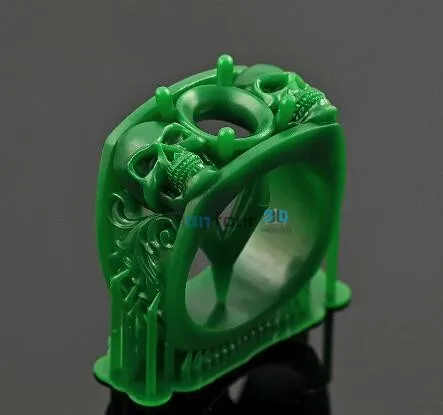
In the end, everything depends on the decision of the designers, but the fundamental principle does not change.
Control
Typical Arduino-based controller with add-on modules
FDM printer operation, including nozzle and platform temperature, filament feed rate, and stepper motors for positioning the extruder, is controlled by fairly simple electronic controllers. Most controllers are based on the Arduino platform, which has an open architecture.
The programming language used by printers is called G-code (G-Code) and consists of a list of commands executed in turn by the 3D printer systems. G-code is compiled by programs called "slicers" - standard 3D printer software that combines some of the features of graphics editors with the ability to set print options through a graphical interface. The choice of slicer depends on the printer model. RepRap printers use open source slicers such as Skeinforge, Replicator G and Repetier-Host.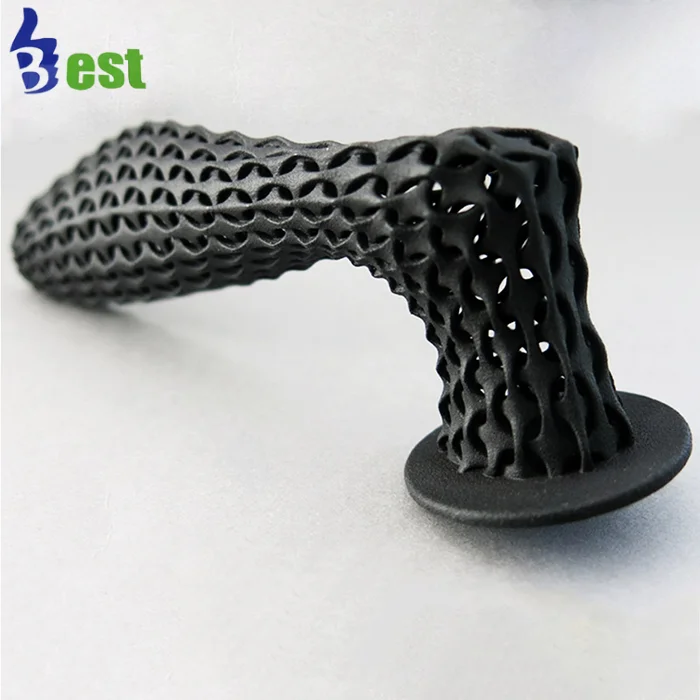 Some companies make printers that require proprietary software.
Some companies make printers that require proprietary software.
Program code for printing is generated using slicers
As an example, we can mention Cube printers from 3D Systems. There are companies that offer proprietary software but allow third-party software, as is the case with the latest generation of MakerBot 3D printers.
Slicers are not designed for 3D design per se. This task is done with CAD editors and requires some 3D design skills. Although beginners should not despair: digital models of a wide variety of designs are offered on many sites, often even for free. Finally, some companies and individuals offer 3D design services for custom printing.
Finally, 3D printers can be used in conjunction with 3D scanners to automate the process of digitizing objects. Many of these devices are designed specifically to work with 3D printers. Notable examples include the 3D Systems Sense handheld scanner and the MakerBot Digitizer handheld desktop scanner.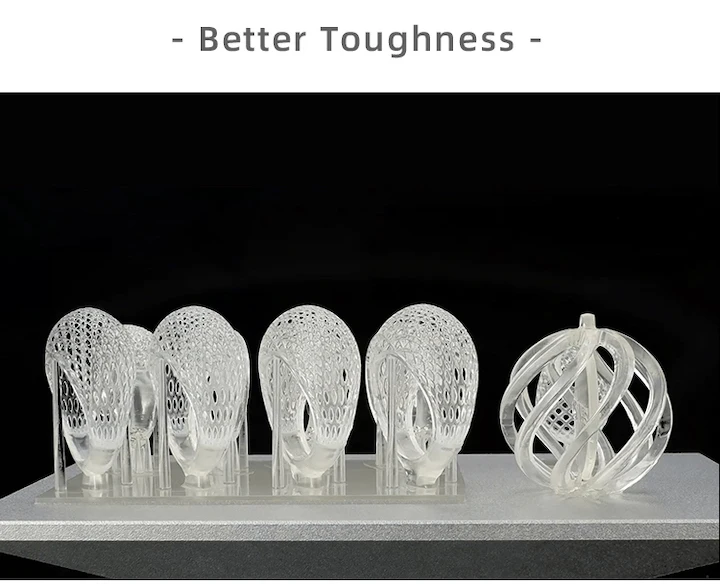
MakerBot Replicator 5th Generation FDM Printer with built-in control module on the top of the frame
The user interface of a 3D printer can consist of a simple USB port for connecting to a personal computer. In such cases, the device is actually controlled by the slicer.
The disadvantage of this simplification is a rather high probability of printing failure when the computer freezes or slows down.
A more advanced option includes an internal memory or memory card interface to make the process standalone.
These models are equipped with control modules that allow you to adjust many print parameters (such as print speed or extrusion temperature). The module may include a small LCD display or even a mini-tablet.
Varieties of FDM printers
Stratasys Fortus 360mc professional FDM printer that allows printing with nylon
FDM printers are very, very diverse, ranging from the simplest homemade RepRap printers to industrial installations capable of printing large-sized objects.
Stratasys, founded by FDM inventor Scott Crump, is a leader in industrial plant manufacturing.
You can build the simplest FDM printers yourself. Such devices are called RepRap, where "Rep" indicates the possibility of "replication", that is, self-reproduction.
RepRap printers can be used to print custom built plastic parts.
Controller, rails, belts, motors and other components can be easily purchased separately.
Of course, assembling such a device on your own requires serious technical and even engineering skills.
Some manufacturers make it easy by selling DIY kits, but these kits still require a good understanding of the technology.
A variant of the popular late 3rd generation Prusa RepRap printer
If you like to make things yourself, then RepRap printers will pleasantly please you with the price: the average cost of the popular early generation Prusa Mendel design is about $500 in a complete set.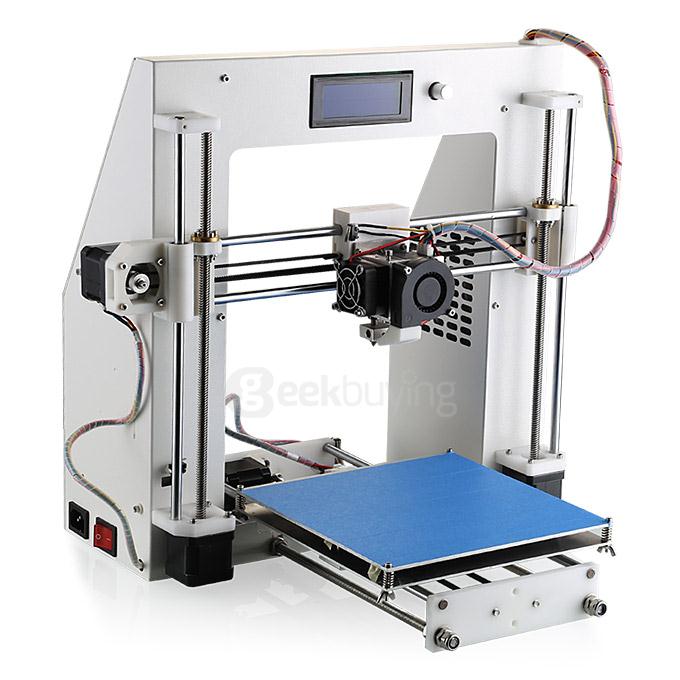
And, despite their "homemade nature", RepRap printers are quite capable of producing models with quality at the level of expensive branded counterparts.
Ordinary users who do not want to delve into the intricacies of the process, but require only a convenient device for household use, can purchase a ready-made FDM printer.
Many companies are focusing on the development of the consumer market segment, offering 3D printers for sale that are ready to print “straight out of the box” and do not require serious computer skills.
3D Systems Cube consumer 3D printer
The most famous example of a consumer 3D printer is the 3D Systems Cube.
While it doesn't boast a huge build area, ultra-fast print speed, or superb model build quality, it's easy to use, affordable, and safe: This printer has received the necessary certification to be used even by children.
Mankati FDM printer demonstration: http://youtu. be/51rypJIK4y0
be/51rypJIK4y0
Laser Stereolithography (SLA)
Stereolithographic 3D printers are widely used in dental prosthetics
Stereolithographic printers are the second most popular and widespread after FDM printers.
These units deliver exceptional print quality.
The resolution of some SLA printers is measured in a matter of microns - it is not surprising that these devices quickly won the love of jewelers and dentists.
The software side of laser stereolithography is almost identical to FDM printing, so we will not repeat ourselves and will only touch on the distinctive features of the technology.
Lasers and projectors
Projector illumination of a photopolymer model using Kudo3D Titan DLP printer as an example
The cost of stereolithography printers is rapidly declining, due to growing competition due to high demand and the use of new technologies that reduce the cost of construction.
Although the technology is collectively referred to as "laser" stereolithography, most recent developments use UV LED projectors for the most part.
Projectors are cheaper and more reliable than lasers, do not require the use of delicate mirrors to deflect the laser beam, and have higher performance. The latter is explained by the fact that the contour of the whole layer is illuminated as a whole, and not sequentially, point by point, as is the case with laser options. This variant of the technology is called projection stereolithography, "DLP-SLA" or simply "DLP". However, both options are currently common - both laser and projector versions.
Cuvette and resin
Photopolymer resin is poured into a cuvette
A photopolymer resin that looks like epoxy is used as consumables for stereolithography printers. Resins can have a variety of characteristics, but they all share one key feature for 3D printing applications: these materials harden when exposed to ultraviolet light. Hence, in fact, the name "photopolymer".
Hence, in fact, the name "photopolymer".
When polymerized, resins can have a wide variety of physical characteristics. Some resins are like rubber, others are hard plastics like ABS. You can choose different colors and degrees of transparency. The main disadvantage of resins and SLA printing in general is the cost of consumables, which significantly exceeds the cost of thermoplastics.
On the other hand, stereolithographic printers are mainly used by jewelers and dentists who do not need to build large parts but appreciate the savings from fast and accurate prototyping. Thus, SLA printers and consumables pay for themselves very quickly.
An example of a model printed on a laser stereolithographic 3D printer
Resin is poured into a cuvette, which can be equipped with a lowering platform. In this case, the printer uses a leveling device to flatten the thin layer of resin covering the platform just prior to irradiation. As the model is being made, the platform, together with the finished layers, is “embedded” in the resin. Upon completion of printing, the model is removed from the cuvette, treated with a special solution to remove liquid resin residues and placed in an ultraviolet oven, where the final illumination of the model is performed.
Upon completion of printing, the model is removed from the cuvette, treated with a special solution to remove liquid resin residues and placed in an ultraviolet oven, where the final illumination of the model is performed.
Some SLA and DLP printers work in an "inverted" scheme: the model is not immersed in the consumable, but "pulled" out of it, while the laser or projector is placed under the cuvette, and not above it. This approach eliminates the need to level the surface after each exposure, but requires the use of a cuvette made of a material transparent to ultraviolet light, such as quartz glass.
The accuracy of stereolithographic printers is extremely high. For comparison, the standard for vertical resolution for FDM printers is considered to be 100 microns, and some variants of SLA printers allow you to apply layers as thin as 15 microns. But this is not the limit. The problem, rather, is not so much in the accuracy of lasers, but in the speed of the process: the higher the resolution, the lower the print speed. The use of digital projectors allows you to significantly speed up the process, because each layer is illuminated entirely. As a result, some DLP printer manufacturers claim to be able to print with a vertical resolution of one micron!
The use of digital projectors allows you to significantly speed up the process, because each layer is illuminated entirely. As a result, some DLP printer manufacturers claim to be able to print with a vertical resolution of one micron!
Video from CES 2013 showing Formlabs Form1 stereolithography 3D printer in action: http://youtu.be/IjaUasw64VE
Stereolithography Printer Options
Formlabs Form1 Desktop Stereolithography Printer
As with FDM printers, SLA printers come in a wide range in terms of size, features and cost. Professional installations can cost tens if not hundreds of thousands of dollars and weigh a couple of tons, but the rapid development of desktop SLA and DLP printers is gradually reducing the cost of equipment without compromising print quality.
Models such as the Titan 1 promise to make stereolithographic 3D printing affordable for small businesses and even home use at around $1,000.



